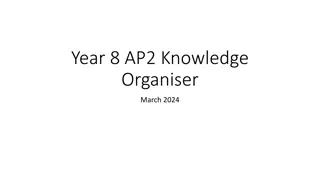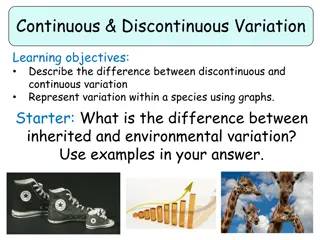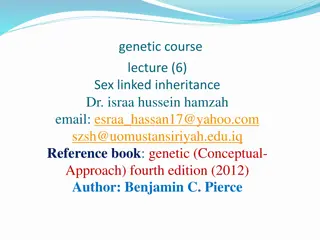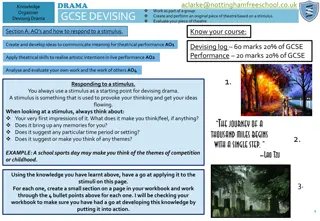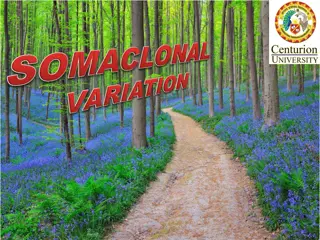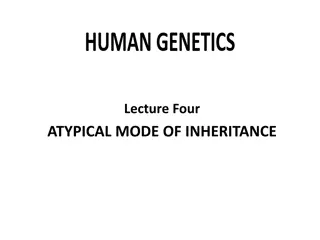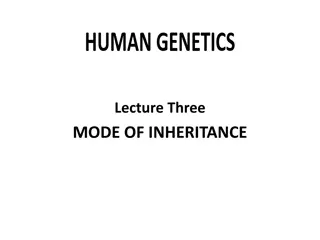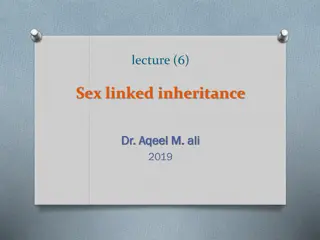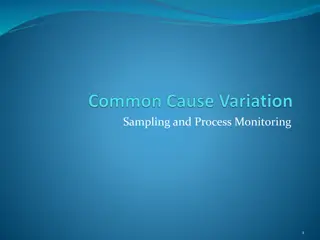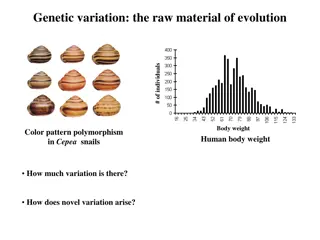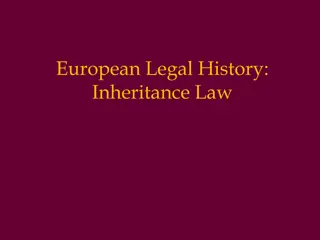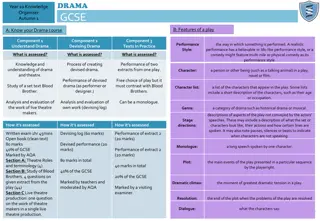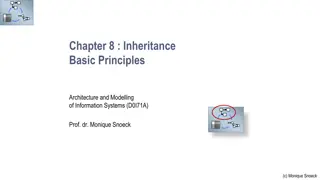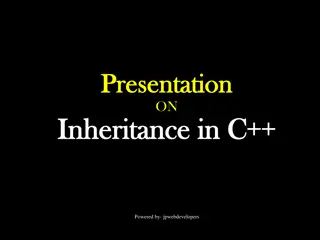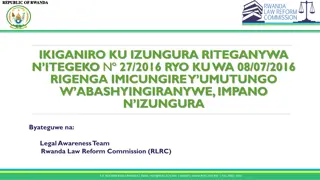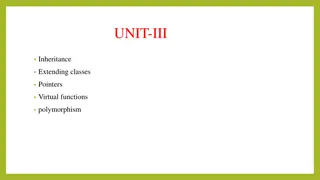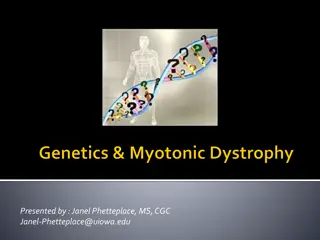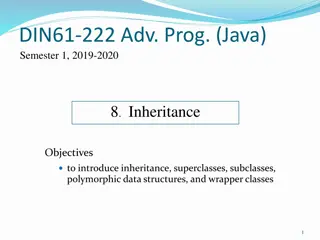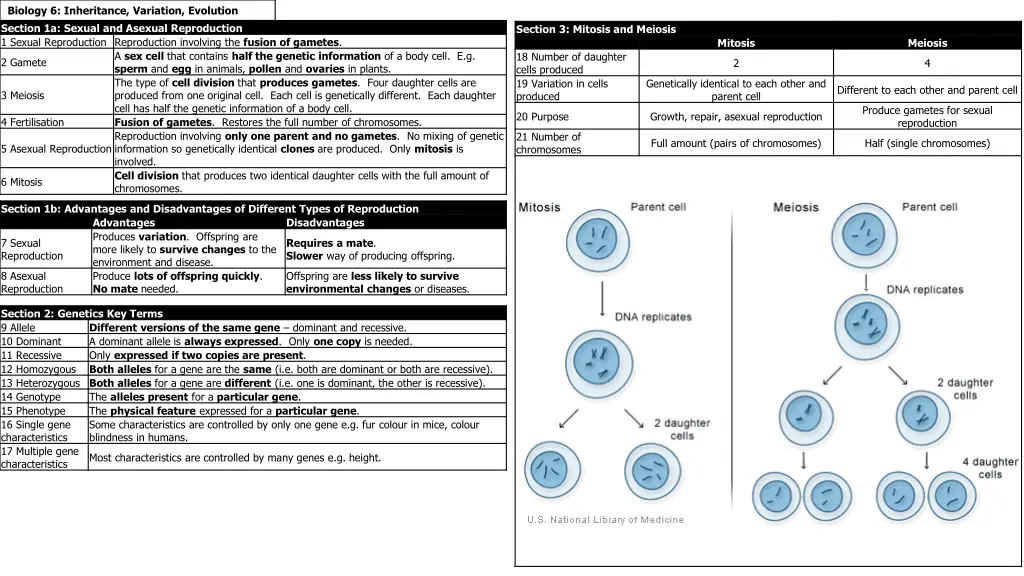
Understanding Inheritance, Variation, and Evolution in Biology
Explore the concepts of sexual and asexual reproduction, genetic diseases, gender inheritance, DNA, and selective breeding in biology. Learn about alleles, chromosomes, and the role of genes in shaping characteristics. Discover the importance of variation for survival and the impact of mutations on organisms.
Download Presentation

Please find below an Image/Link to download the presentation.
The content on the website is provided AS IS for your information and personal use only. It may not be sold, licensed, or shared on other websites without obtaining consent from the author. If you encounter any issues during the download, it is possible that the publisher has removed the file from their server.
You are allowed to download the files provided on this website for personal or commercial use, subject to the condition that they are used lawfully. All files are the property of their respective owners.
The content on the website is provided AS IS for your information and personal use only. It may not be sold, licensed, or shared on other websites without obtaining consent from the author.
E N D
Presentation Transcript
Biology 6: Inheritance, Variation, Evolution Section 1a: Sexual and Asexual Reproduction 1 Sexual Reproduction Reproduction involving the fusion of gametes. A sex cell that contains half the genetic information of a body cell. E.g. sperm and egg in animals, pollen and ovaries in plants. The type of cell division that produces gametes. Four daughter cells are produced from one original cell. Each cell is genetically different. Each daughter cell has half the genetic information of a body cell. 4 Fertilisation Fusion of gametes. Restores the full number of chromosomes. Reproduction involving only one parent and no gametes. No mixing of genetic information so genetically identical clones are produced. Only mitosis is involved. Cell division that produces two identical daughter cells with the full amount of chromosomes. Section 3: Mitosis and Meiosis Mitosis Meiosis 18 Number of daughter cells produced 19 Variation in cells produced 2 Gamete 2 4 Genetically identical to each other and parent cell Different to each other and parent cell 3 Meiosis Produce gametes for sexual reproduction 20 Purpose Growth, repair, asexual reproduction 21 Number of chromosomes Full amount (pairs of chromosomes) Half (single chromosomes) 5 Asexual Reproduction 6 Mitosis Image result for mitosis vs meiosis gcse Section 1b: Advantages and Disadvantages of Different Types of Reproduction Advantages Produces variation. Offspring are more likely to survive changes to the environment and disease. 8 Asexual Reproduction No mate needed. Disadvantages 7 Sexual Reproduction Requires a mate. Slower way of producing offspring. Produce lots of offspring quickly. Offspring are less likely to survive environmental changes or diseases. Section 2: Genetics Key Terms 9 Allele 10 Dominant 11 Recessive 12 Homozygous 13 Heterozygous Both alleles for a gene are different (i.e. one is dominant, the other is recessive). 14 Genotype The alleles present for a particular gene. 15 Phenotype The physical feature expressed for a particular gene. 16 Single gene characteristics blindness in humans. 17 Multiple gene characteristics Different versions of the same gene dominant and recessive. A dominant allele is always expressed. Only one copy is needed. Only expressed if two copies are present. Both alleles for a gene are the same (i.e. both are dominant or both are recessive). Some characteristics are controlled by only one gene e.g. fur colour in mice, colour Most characteristics are controlled by many genes e.g. height.
Biology 6: Inheritance, Variation, Evolution Section 4: Genetic Diseases Section 5: Gender Inheritance 29 Human Chromosomes 30 Males 31 Females Polydactyly Cystic Fibrosis Human body cells contain 23 pairs of chromosomes. 22 pairs control characteristics only, one pair controls sex. Males have two different chromosomes XY. Females have two chromosomes that are the same - XX. Disorder of cell membranes. Causes sticky mucus on lungs. Recessive allele 22 Problem Extra fingers and toes 23 Caused by 24 Genotype of people with disease 25 Genotype of people without disease 26 Does the disease have carriers? Dominant allele PP or Pp cc pp CC or Cc No Yes genotype Cc 27 Polydactyly Section 6: DNA and the Genome Genetic material. DNA is a polymer made up of two strands forming a double helix. The DNA makes up chromosomes. A gene is a small section of DNA on a chromosome. Each gene codes for a particular sequence of amino acids, which make a protein. A long coil of DNA. Found in the nucleus. The entire genetic material of that organism. 32 DNA 33 Gene 34 Chromosome 35 Genome 28 Cystic Fibrosis
Section 7a: Variation and Evolution Key Terms Section 8: Selective Breeding 41 Selective Breeding (Artificial Selection) The differences between organisms. Can be caused by genes (e.g. eye colour), the environment (e.g. scars) or both the environment and genes (e.g. weight). All variation in genes is caused by mutations. Mutations are changes in genes. Most have no effect on the phenotype. Occasionally mutations have a positive effect on phenotype and organisms with these mutations are more likely to survive. The change in the genes of a population over time. Occurs through natural selection. The process by which the individuals best adapted to the environment survive and pass on their genes. Occurs when two populations are so different that they can no longer breed to produce fertile offspring. Two new species are formed. The process by which humans breed plants and animals for particular genetic characteristics. Selective breeding can lead to inbreeding where some breeds are particularly prone to disease or inherited defects. 36 Variation 42 Inbreeding 37 Mutation 43 Process of selective breeding: 1. Choose parents with correct characteristics from the population. 2. Breed them together. 3. Choose the offspring with the desired characteristics and breed them together. 4. Continue over many generations. 44 Examples of desired characteristics: Disease resistance in food crops. Animals which produce more meat or milk. Domestic dogs with a gentle nature. Large or unusual flowers. 38 Evolution 39 Natural selection 40 Speciation Section 9: Genetic Engineering Section 7b: Natural Selection A process which involves modifying the genome of an organism by introducing a gene from another organism to give a desired characteristic. Crops that have been produced by genetic engineering. Something that can carry a gene into another organism e.g. bacterial plasmid or virus. 45 Genetic Engineering 46 GM Crop 47 Vector 48 Process of genetic engineering (HT): 1. Genes are cut out by enzymes. 2. The gene is inserted into a vector (either a bacterial plasmid or virus). 3. The vector is used to insert the gene into the required cells 4. Genes are transferred to the cells of animals, plants or microorganisms at an early stage in their development so that they develop with desired characteristics. 40 There is variation in a population s alleles caused by mutations. 41 There is competition between individuals e.g. for food. 43 Over time the number of individuals with the better adapted alleles increases. 42 The better adapted organisms survive, breed and pass on their alleles. 49 Examples of genetic engineering: Bacterial cells have human insulin gene inserted into them so that they produce insulin for diabetics. Plants that have had genes inserted that make them resistant to disease, insects or herbicides.
Biology 6: Inheritance, Variation, Evolution Section 14: Reducing the Rate of Development of Antibiotic Strains 65 Doctor should not prescribe antibiotics when they are not needed. 66 Patients should complete their course of antibiotics so all bacteria are killed. 67 The agricultural use of antibiotics should be restricted. Section 10: Development of Understanding Key Terms 50 Fossil 51 Extinction 52 Antibiotic Resistant Bacteria 53 Classification The remains of organisms from millions of years ago. No remaining indiviiduals of a species are still alive. Bacterial cells that are not affected by the antibiotic The method used by scientists to order living organisms. Section 15: Linnaeus Classification Section 11: How Fossils are Formed 54 From parts of organisms that have not decayed because one or more of the conditions (eg oxygen) needed for decay are absent. 55 As preserved traces of organisms, such as footprints, burrows and rootlet traces. 56 When parts of the organism (usually bones) are replaced by minerals as they decay. Kingdom Phylum Class Order Family Genus Species Section 12: Factors Contributing to Extinction 57 Changes to the environment, such as a change in climate. 58 New diseases. 59 New predators. 60. New competitors. Section 16: Carl Woese three domain system Archaea Bacteria Eukaryota Primitive bacteria usually living in extreme environments. True bacteria. Includes protists, fungi, plants and animals. Section 13: Development of Resistant Bacteria 61 Random changes or mutations occur in the genes of individual bacterial cells. 62 Some mutations protect the bacterial cell from the effects of the antibiotic. 63 Bacteria without the mutation die or cannot reproduce with the antibiotic present. 64 The resistant bacteria are able to reproduce with less competition from normal bacterial strains.


